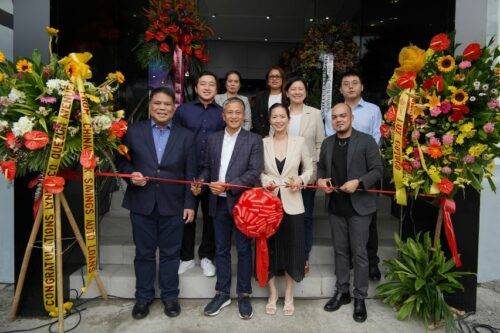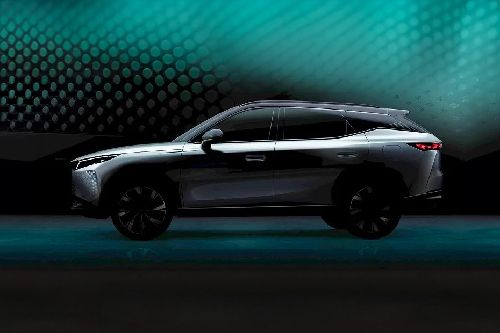VICOAP looks to up roadworthiness standards and safety on the road

MANILA: Considered to be the biggest group with 80 Private Motor Vehicle Inspection Centers (PMVICs) situated in different parts of the country, the Vehicle Inspection Center Operators Association of the Philippines (VICOAP) has committed to support the program of the government to improve roadworthiness standards.
The group's pledge also aims to lessen the number of road accidents that result in a yearly death toll of 12,000, which is more than the number of COVID-19 deaths recorded last year.
PMVICs were created as part of a government program that initially introduced the Motor Vehicle Inspection System (MVIS) in 1982 to guarantee that land-based vehicles, two-wheel and four-wheel alike, are safe and reliable to drive.
The PMIVICs, led by both the Land Transportation Office (LTO) and the Department of Transportation (DOTr), increased the measurement standards that specify whether these vehicles will be permitted to operate, or remain in the shop for a certain timeframe to undergo an overhaul or a few repairs.
DOTr Secretary Arthur Tugade clarified the vision that led to the creation of the PMVICs and the MVIS, as well as the urgency by which the roadworthiness of vehicles should be tackled.
He explained, “We want to prevent the unnecessary loss of lives and property along our roads, dahil ang road crash, hindi namimili ng panahon — may pandemya man o wala (because road crashes happen where there is a pandemic or not). Hindi ito namimili ng biktima —mayaman man o mahirap (It does not choose its victim — whether rich or poor) — we can all fall victim to this ‘epidemic on wheels.’ Kaya po dapat lamang na i-address na natin ito (This is the reason why it should be addressed). Ngayon na ang panahon upang magkaroon tayo ng mas maayos at dekalidad na sistema (Now is the time so that we can have a more organized and high-quality system). We have to recover and thrive amid the pandemic, and in the face of this epidemic called road crash.”
The latest assessment that the Private Emission Testing Centers (PETCs) are carrying out focus solely on the quality of the smoke that the vehicle releases. This is in sharp contrast to the PMVICs that monitor all the vehicle parts based on an over 60-plus criterion that acknowledges the structural integrity, dependability, and consistency of the various components.
Wheel alignment, headlights, brakes, and others are evaluated and examined to determine if they are compliant with current road requirements and if they are still up to speed, or if the components need immediate replacement or repair.
A standard of more than 60 points also provide a reliable rating as to whether a car should be driven around highways, with a minimal risk of resulting in an accident that might cause harm to the occupants. It was the result of both the DOTr and the LTO’s extensive research and standardization.
The technical working team of the two organizations made the ASEAN standards as its baseline, while maintaining awareness of the Philippine road setting.
The results are reliable and factual since the information that comes from the assessments and analyzed through automation is not subject to human interference.
PMVICs are also fitted with innovations such as biometrics and CCTV cameras that determine the actual tests being carried out on the floor and then checked at a later time. This method minimizes the risk for corruption like the "no-appearance" scam.
The PMVIC test is only for 15 minutes and the owner has to be present with his or her vehicle and must have with him a copy of its Certificate of Registration or original receipt.
VICOAP President Iñigo Larrazabal explained, “We are constantly gathering data across the entire inspection process — data which can reveal any statistical anomalies that would point to corruption. And because most parts of the process are automated, we know that they cannot be tampered with. In other cases, we can review the data in vulnerable areas to identify any patterns of abuse so we can then act accordingly.”
He also compared the PMVIC vehicular assessment to a detailed executive medical evaluation of a patient, where essential parts of his physiology are examined through blood work, CT-scan, and X-ray, among other medical procedures.
Sec. Tugade also shared that the precision and thoroughness of the PMVIC tests as well as its findings warrant continuous public support, instead of direct criticisms.
He said, “Pitumpu't tatlo (73) ang nasa checklist ng inspectio — kasama na ang emission test, alignment ng gulong, brake system, ilaw, makina at marami pang iba — bakit may mga batikos pa din? Bakit 'di natin sabihin, ‘Hay, salamat! Mas masisiguro ko ang kaligtasan ko at ng aking mga kaanak at mahal sa buhay.’ (Seventy-three items are part of the checklist for inspection — including the emission test, alignment of tires, brake system, light, engine, and others. Why are there still criticisms? Why don’t we say instead, ‘Thank you! I can now ensure my safety and the safety of my relatives and loved ones.’)”
Photo from the Department of Transportation
Also read: Vehicle inspection operators group guarantees ‘transparency through technology’
Sell your car at the best price
 Verified and genuine buyers
Verified and genuine buyers
PIMS 2024
Trending & Fresh Updates
- Latest
- Popular
You might also be interested in
- News
- Featured Stories
Featured Cars
- Latest
- Upcoming
- Popular
Latest Car Videos on Zigwheels

Car Articles From Carmudi
- journal
- advice
- financing
- insurance












































































